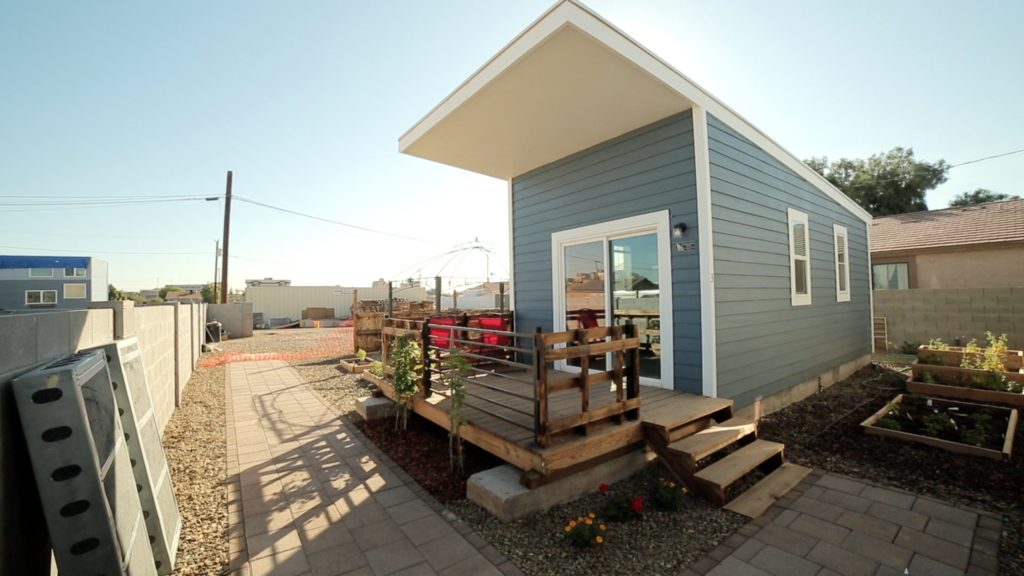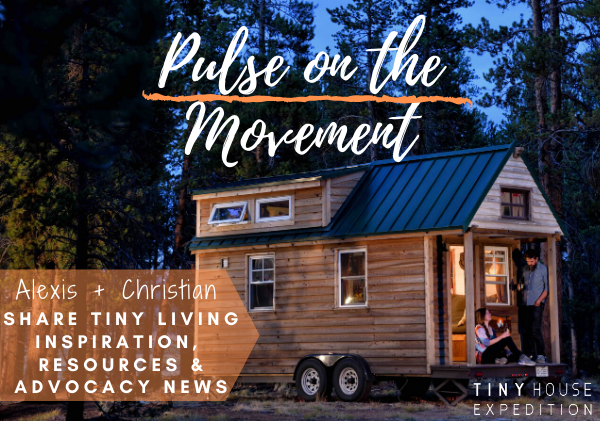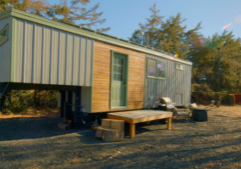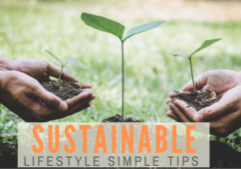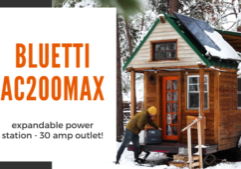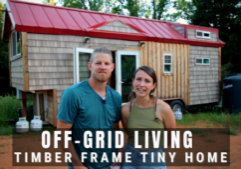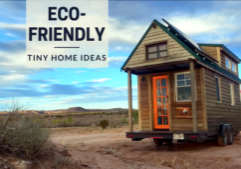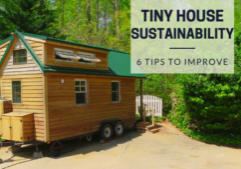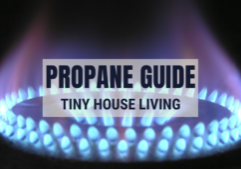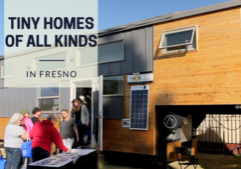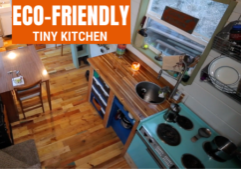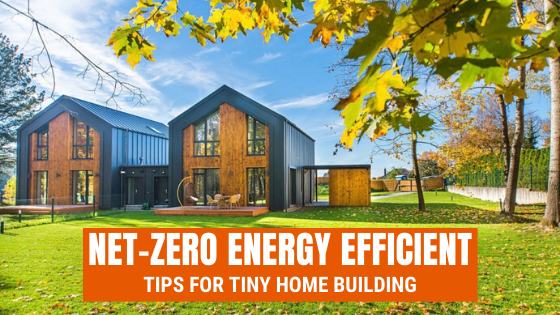
Tips For Turning Your Tiny House Into A Net-Zero Energy Efficient Structure
Guest Post by Matt Lee
Every tiny house homeowner has their own reason for wanting to live the tiny house lifestyle. Maybe you want to live off-the-grid. Perhaps you were interested in the cost savings. Maybe you wanted to minimize and lessen your impact on the planet. Whatever your reason for joining the tiny house revolution, or being interested in it, it’s worth discussing the potential for sustainability and energy-efficiency.
Net zero homes were once just a theory, but now, they’re an actual attainable thing. This attainability is especially true in tiny houses.
So, what is a net zero home? How can you turn your home into a net zero, energy-efficient structure? Let’s break it all down.
What is a Net Zero, Energy-Efficient Structure?
Essentially, net-zero, or zero-energy structures or homes are structures that are designed to produce as much energy as the home consumes. This means zero dollars in electricity bills. However, it’s not all about energy production. In fact, creating a net-zero structure has much more to do with energy-efficiency and minimizing energy usage than it does about energy production.
Why is that? Well, if it were just about energy production, creating net-zero homes would be as simple as throwing solar panels on a house and calling it a day. However, it’s not quite that simple. You have to ensure that you’re only using the amount of energy you can produce, and that requires thoughtful construction and techniques throughout the entire process.
Every net-zero structure, whether it’s a tiny house, or a luxury condo, requires intricate planning and energy modeling. However, here are some basic tips to get you started.
Use ICF Construction
The most crucial element of net-zero homes lies in the original construction. While there are several construction techniques, none are quite as effective as ICF construction. ICF stands for insulated concrete forms. These ICF blocks are foam-insulated, and they fit together like puzzle pieces. What this means is that very little air will be able to slip through the seams.
A considerable part of energy-efficiency lies in temperature control and keeping the outside out and the inside in. The less air can flow through the structure, the closer you’ll be to attaining a net-zero home. This is why ICF construction works so well for zero energy homes.
In addition, ICF blocks are incredibly durable, pest-resistant, and stand up well to bad weather, making them a top choice for tiny house homeowners.
Don’t Overlook Insulation
While ICF construction already provides some insulation, you’ll need to ensure that the entire structure is adequately insulated. This goes back to keeping the home’s energy usage low and decreasing the energy required to heat and cool the home.
Mostly, you want to make sure that the home has an R-value that matches your climate’s demands. Harsher temperatures require higher R-values. R-value is simply what degree a material resists heat. Your goal in creating a net-zero tiny house will be to achieve the R-value your climate requires with insulation.
This will likely require an additional wall, crawlspace, and roof insulation.
Air Barriers and Weatherproofing
While talking about construction, you’ll likely want to invest in both air and vapor barriers, which will further insulate and protect the tiny house from the outside elements. However, beyond the structural construction, you’ll want to pay special attention to weatherproofing windows and doors.
All the cracks surrounding your doors and windows are areas where air can get inside. You’ll also want to check the entire house for any other cracks or hidden areas where air might seep inside.
Maximize the Other Details
For the rest of the home design, it’s about maximizing every opportunity for energy efficiency. You’ll want to ensure the windows, light bulbs, heat pumps, heaters, and appliances are energy-efficient models.
Ultimately, once you’ve maximized construction and design, energy usage comes down to habits. You might build the perfect net-zero tiny house, only to realize that you consume a lot of energy. So, be sure to reflect your own habits to maximize energy consumption goals.
Go Solar
Finally, once the tiny house is designed to minimize usage, you have to figure out how to generate your own power. The most straightforward way to do that is via solar panels. Solar panels are installed on your roof, so it’s also essential that your house’s roof is in good condition. Because of that, you’ll want to look into asphalt shingle alternatives.
Most solar systems are grid-tied, however, if you’re looking for an off-the-grid experience, you’ll want to look into solar batteries as well, so that you can store your extra energy and use it when you need it.
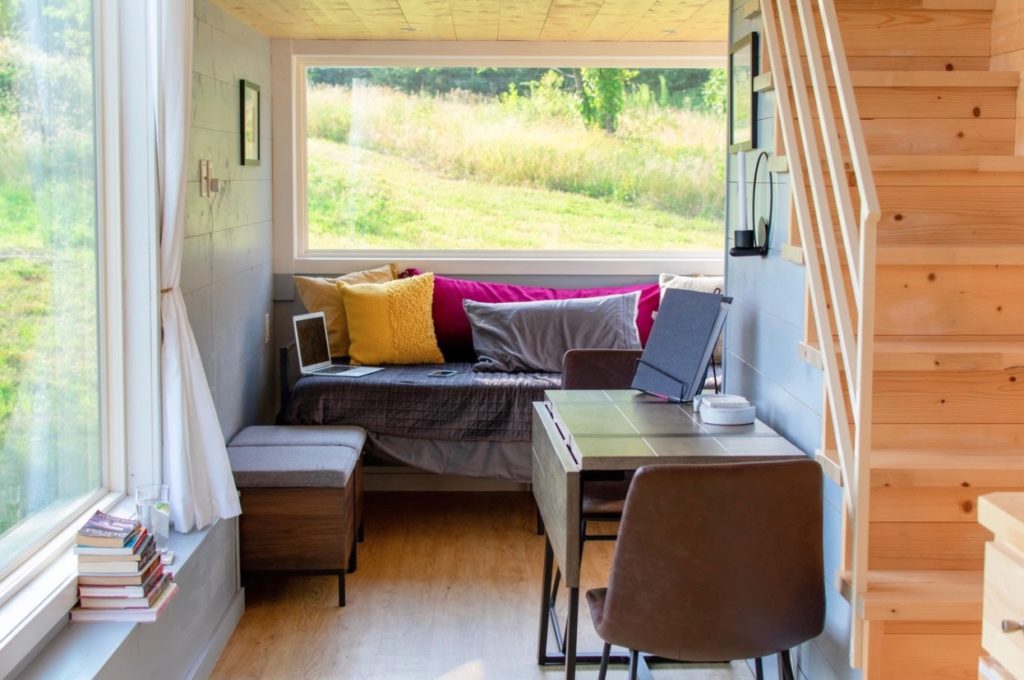
Going Net Zero with Your Tiny Home
Having a net-zero tiny house is more than just a crazy dream. Thanks to advancements in construction and technology, creating a home that produces more energy than it uses is absolutely possible. Just remember, you need to do some energy modeling and get a clear plan before diving in full force, but these tips are a great starting point.
by Matt Lee
Matt Lee is the owner of the Innovative Building Materials blog and a content writer for the building materials industry. He is focused on helping fellow homeowners, contractors, and architects discover materials and methods of construction that save money, improve energy efficiency, and increase property value.
Good Tiny News Delivered Weekly!
Sign-up for our weekly newsletter featuring the latest good news, design inspiration, legal victories, and new resources to help you achieve your dreams!

